Should you be worried if you see one roach in your house?
The quick answer is no.
But you should take it seriously.
Although the sight of one roach is not necessarily a sign that you have an infestation, it doesn’t mean you should ignore it.
When you see a roach, you must take the necessary actions to determine if you have an infestation.
Here’s how:
1. Identify the Cockroach You Have
The first step to determine if you have an infestation to determine what type of cockroach you saw.
Some cockroaches live indoors, while others thrive outdoors.
Knowing the type of cockroach you have will help you know exactly where to look for infestations.
You’ll also know if what you saw is a cockroach that lives in your home or just stumbled in it.
The best way to identify what type of cockroach you have is using sticky traps.
Here are different types of cockroaches and where you can find them.
German Cockroach
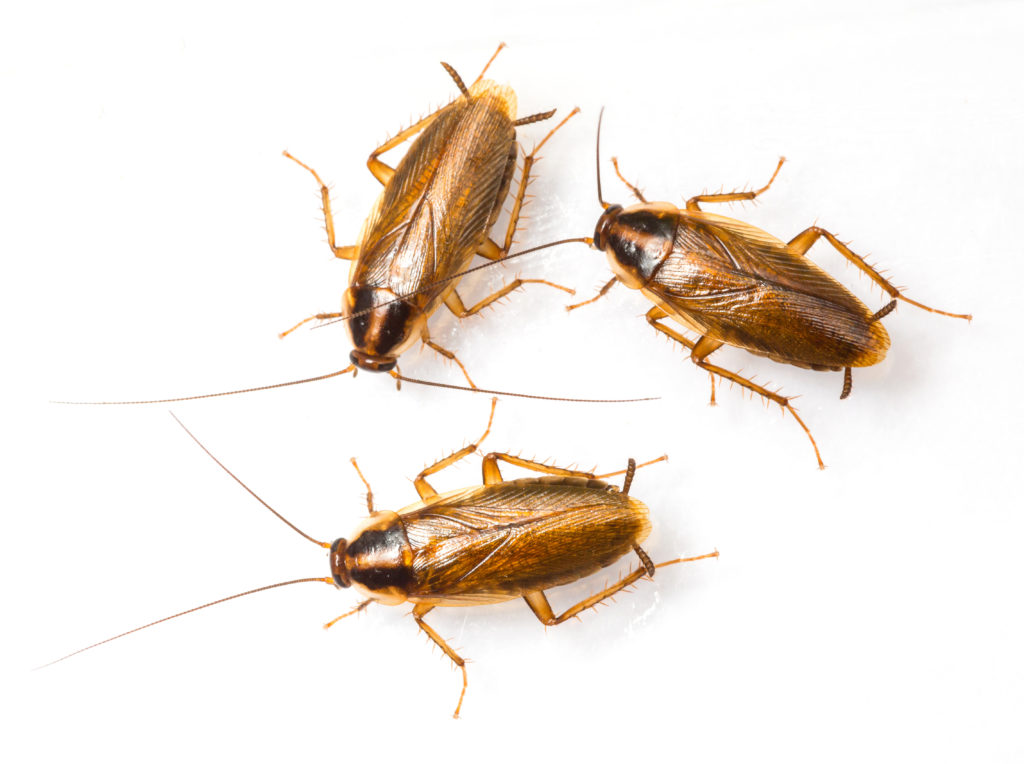
German cockroaches prefer to live indoors and are particularly common in apartment buildings.
They are some of the most worrisome types of cockroaches you can find in your home.
These cockroaches breed faster than any other cockroach species; one female can produce up to 400 young in only about 100 days.
German cockroaches also post a real danger to health.
They walk around filth and feces and can spread disease in your home.
They can contaminate your food, utensils, and cooking surfaces.
If you see a German cockroach in your home, take immediate action to determine and prevent infestation.
Appearance:
German cockroaches are relatively small.
A full-grown adult ranges from ½ to ⅝ of an inch long.
They are light brown to tan in color.
An adult German roach is most distinguishable by two dark stripes right below their head or pronotum.
Baby German roaches, also known as nymphs or instars, are about ⅛ inch in length with a dark brown or black color.
As nymphs grow, they tend to get lighter in color and develop the signature dark stripes running down their back.
Where to Find Them:
If you have a German cockroach infestation, 99% of the time, they are hiding in your kitchen or bathroom.
Your kitchen is the perfect place for german roaches to hide; it offers warm, humid environments with easy access to food and water.
To determine if you have an infestation, you can check in these two places first.
Here are some places you should check in your kitchen:
- Under the sink.
- Behind, under, and on the side of appliances.
- On the bottom of your kitchen countertops.
- Crevices between kitchen cabinets.
- On top of cabinets and shelves.
- Baseboards and crevices at the bottom of the cabinets.
- Inside kitchen cabinets. Typically at the bottom drawers or the corners of cabinets.
- Near trash or inside trash cans.
- Near water sources such as pipes or hoses.
In bathrooms, German cockroaches often hide:
- Under the sink.
- Check baseboards and crevices at the bottom of the cabinets.
- Near and Around the toilet.
- Inside the base of the toilet.
- Behind, under, or on the side of any furniture in a bathroom.
American Cockroach
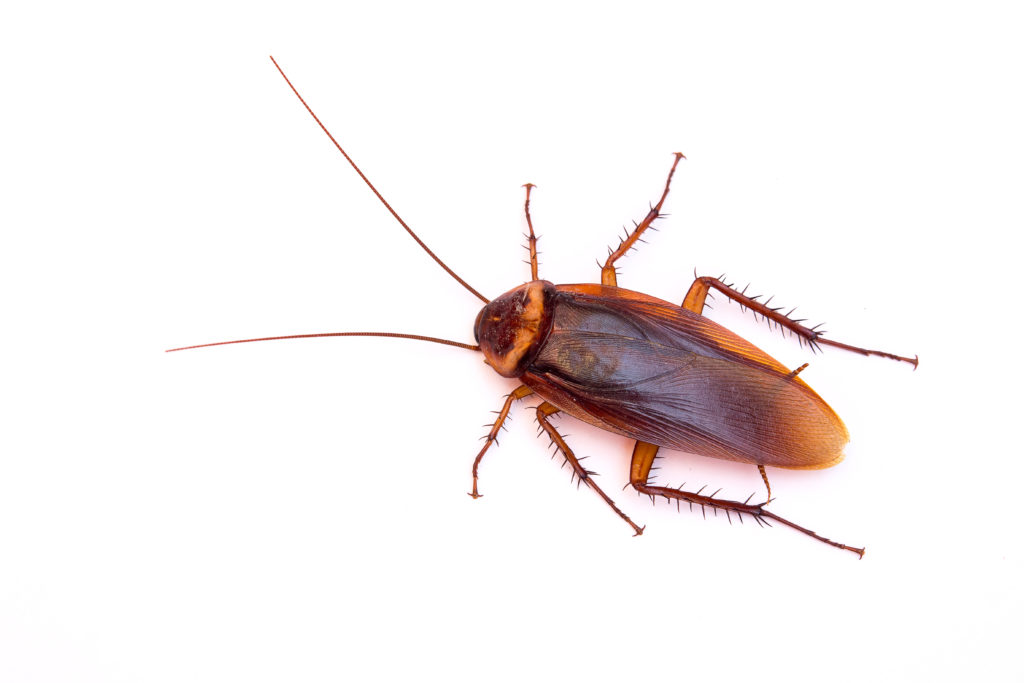
Unlike German cockroaches, American live both indoors and outdoors.
Similar to German cockroaches, the American roach can spread disease.
Also, the enzymes found in roaches feces, shedding body parts, eggs, and saliva can trigger both allergic reactions and asthma attacks.
Similar to German Cockroaches once you see an American cockroach you should take immediate action to determine how they entered your home and if you have an infestation.
Appearance:
An adult American cockroach can grow up to 3 inches in length, making them the largest of the common roaches.
They have a reddish-brown color with a light yellow band around their thorax.
The two most apparent distinctions between adult and juvenile American roaches is size and wings.
Juvenile American roaches are smaller and do not have wings.
Where to Find Them:
American roaches love dark, damp, warm places with food and water nearby.
As such, they are likely hiding in your kitchen or bathroom.
When applying treatments, make sure to cover these two areas first.
- In particular, check:
- Under your kitchen and bathroom sink.
- Behind, under, and on the side of appliances.
- On the bottom of your kitchen countertops.
- On top of cabinets and shelves.
- Baseboards and crevices at the bottom of the cabinets.
- Inside kitchen cabinets. Typically at the bottom drawers or the corners of cabinets.
- Near trash or inside trash cans.
- Near water sources such as pipes or hoses.
- Sewer lines
- Garbage disposals
- Inside your pipes, sinks, showers. Check these especially if you have not used these for a long period of time. The water evaporates and they can crawl inside from the sewers.
Oriental Cockroach
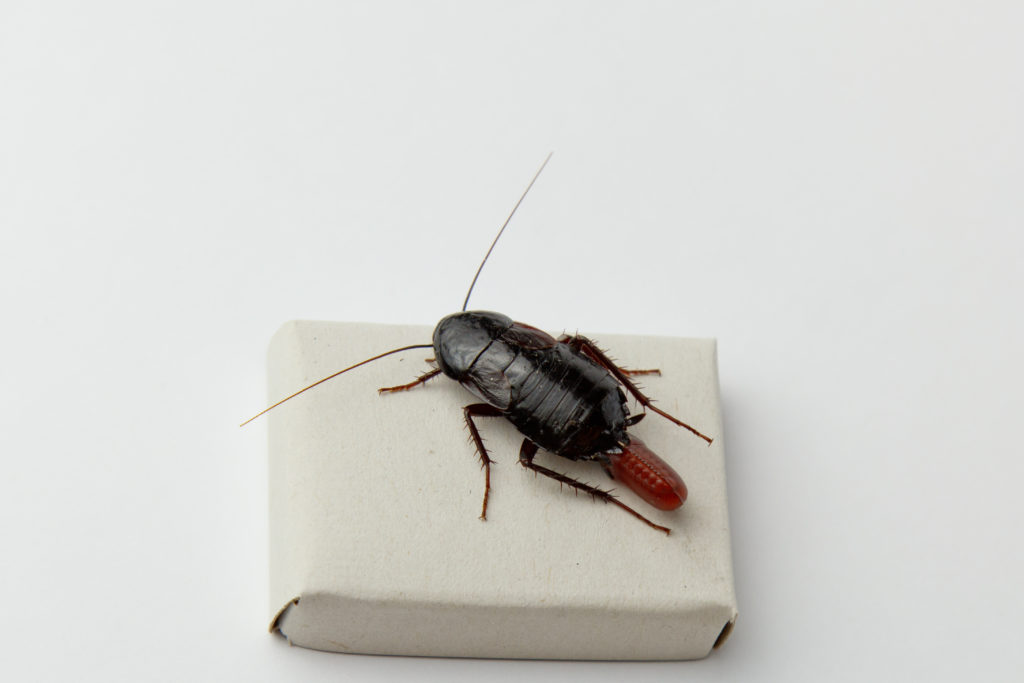
Oriental cockroaches prefer to live outdoors.
If you spotted an oriental cockroach in your home, don’t worry too much.
They’ve likely entered your home accidentally.
Appearance:
Adult Oriental cockroaches grow to about 1.25 inches in length.
They have a shiny, dark color ranging from reddish-brown to black.
Oriental roaches are also slow and unable to fly.
Where to Find Them:
Oriental cockroaches are outdoor cockroaches.
You can typically find them in: homes that have a lot of vegetation
- Under mulch
- Flower gardens,
- Under piles of leaves,
- Under stones or rocks
- Under garbage cans
- Under porches;
- Inside Storm drains and Sewers.
Unlike German Cockroaches, Oriental roaches like to stay in cool places (below 84 F).
They also prefer to be in damp and dark locations.
If you find them indoors you are likely to find them near a source of water.
As such, you can expect to find them in basements, cellars, inside service ducts, toilets, bathtubs, near pipes, and radiators.
Brown Banded Cockroach
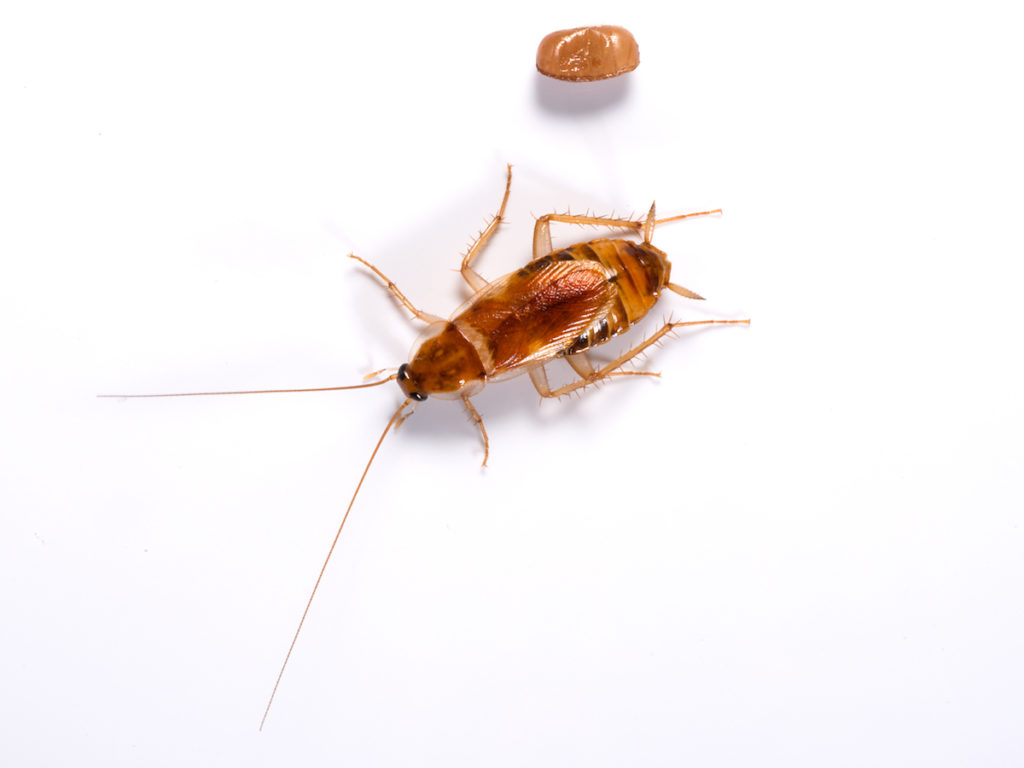
Brown Banded Roaches prefer to stay indoors and are another common household pest.
Similar to other roaches, Brown banded roaches are dangerous pests to have inside your home.
They spread bacteria and pathogens to food and cooking surfaces.
They also reproduce fast, making them a serious problem for homeowners.
Appearance:
Brown banded cockroaches are much smaller than other species.
Adult Brown-banded cockroaches only grow up to 0.5 inches long and have thin bodies.
They have a light brown or yellow strip on their wings, abdomens, and the sides of their thorax.
Males have golden-tan color, while females have a darker brown.
Also, the male brown banded cockroach can fly, while female brown banded cockroaches can’t.
That said, male brown banded cockroaches are more likely to jump than fly.
Females brown banded roaches’ wings cover only part of the abdomen, while the males’ arms extend past their bodies.
The nymphs are much smaller.
You are also distinct from adults with the two light horizontal bands on their bodies.
Where to Find Them:
Brown-banded cockroaches love dry and warm locations. They also like to be in high places, such as upper walls and cabinets.
Here are common locations where you’ll find them:
- Upper kitchen and bathroom cabinets.
- Near ceilings, light fixtures, crown molding, and electronics.
- Crevices in between cabinets, floorboards, and under appliances.
- In between and under couches or dressers.
- Behind, under, and on the side of appliances.
- On the bottom of your kitchen countertops.
- Crevices between kitchen cabinets.
- On top of cabinets and shelves.
- Baseboards and crevices at the bottom of the cabinets.
- Inside kitchen cabinets. Typically at the bottom drawers or the corners of cabinets.
- Near trash or inside trash cans.
Smoky Brown Cockroach
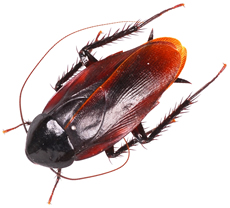
Like Oriental Roaches, these critters prefer the outdoors as their ideal habitat.
They like warmth, light, and water.
Smokey Brown cockroaches struggle to survive indoors.
If you do find one indoors, it is likely they entered your home accidentally.
Appearance:
The Smokey Brown Roaches are dark in color.
They have long wings, extending past their bodies, which are around 1.5 inches long.
If you are unsure if a roach in your home is a Smokey Brown Roach, check the coloring.
Smoky Brown cockroaches have a dark brown, almost black solid color across their bodies.
Where to Find Them:
These critters live outdoors.
They like warmth, light, and water.
As such, you’ll typically find them hanging out in planter boxes, shingles, woodpiles, shrubs, trees, and other vegetation.
Although rare, it’s also possible to see these roaches in your home, particularly in attics, garages, and basements.
They typically enter your home by accident and do so when chasing the light.
In some cases, they go indoors looking for a source of water.
2. Look for Signs of Infestations
Now that you know where these roaches live it’s time to look for signs of infestation.
Here are some telltale signs that you have a cockroach infestation:
1. Roach Feces
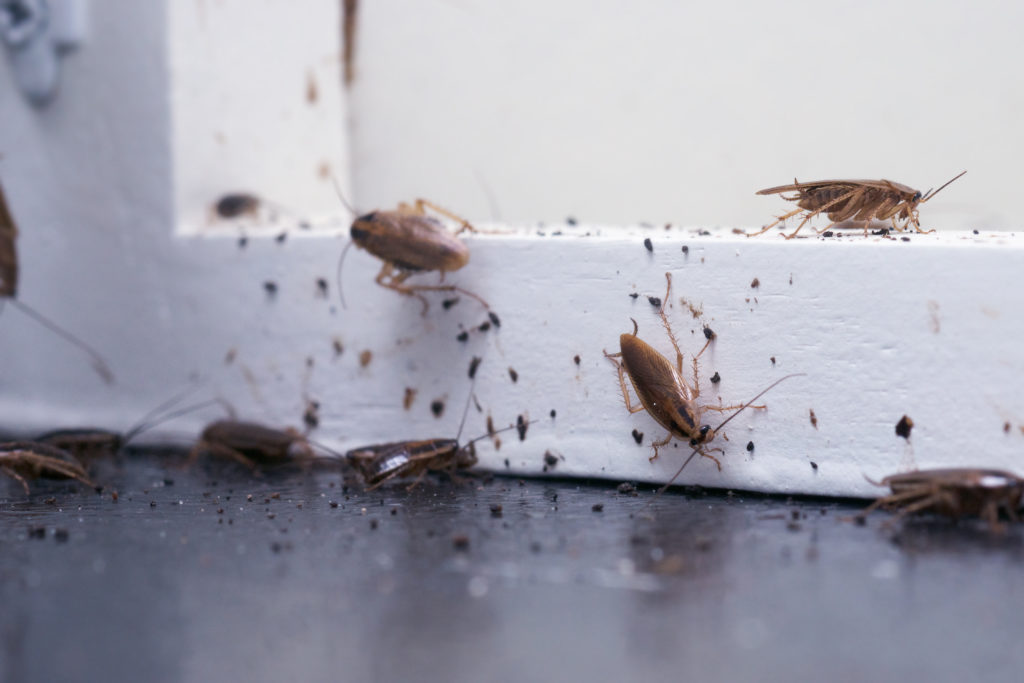
Roach droppings or feces is a good indicator of an infestation.
Roach droppings are small, black specks.
If you have a severe infestation, these dropping can look like that look like coffee grinds or ground pepper.
2. Cockroach Body Parts
As juvenile roaches (nymphs )grow, they go through a process called molting.
During molting, nymphs shed their exterior so that they can grow larger.
After molting, nymphs become a white cockroach.
white cockroaches are cockroaches that have recently molted.
If you see white cockroaches and skin casings in your home, you likely have a growing infestation.
You may find these exoskeletons entirely intact.
But in some cases, you’ll find them in bits and pieces after other cockroaches have fed on them.
If you have an infestation, you’ll also see other body parts other than skin casings.
That’s because when a cockroach dies, other cockroaches feed on their bodies.
So, you’ll find pieces of body parts such as bits of wings and antennae in areas around your home.
3. Cockroach Eggs
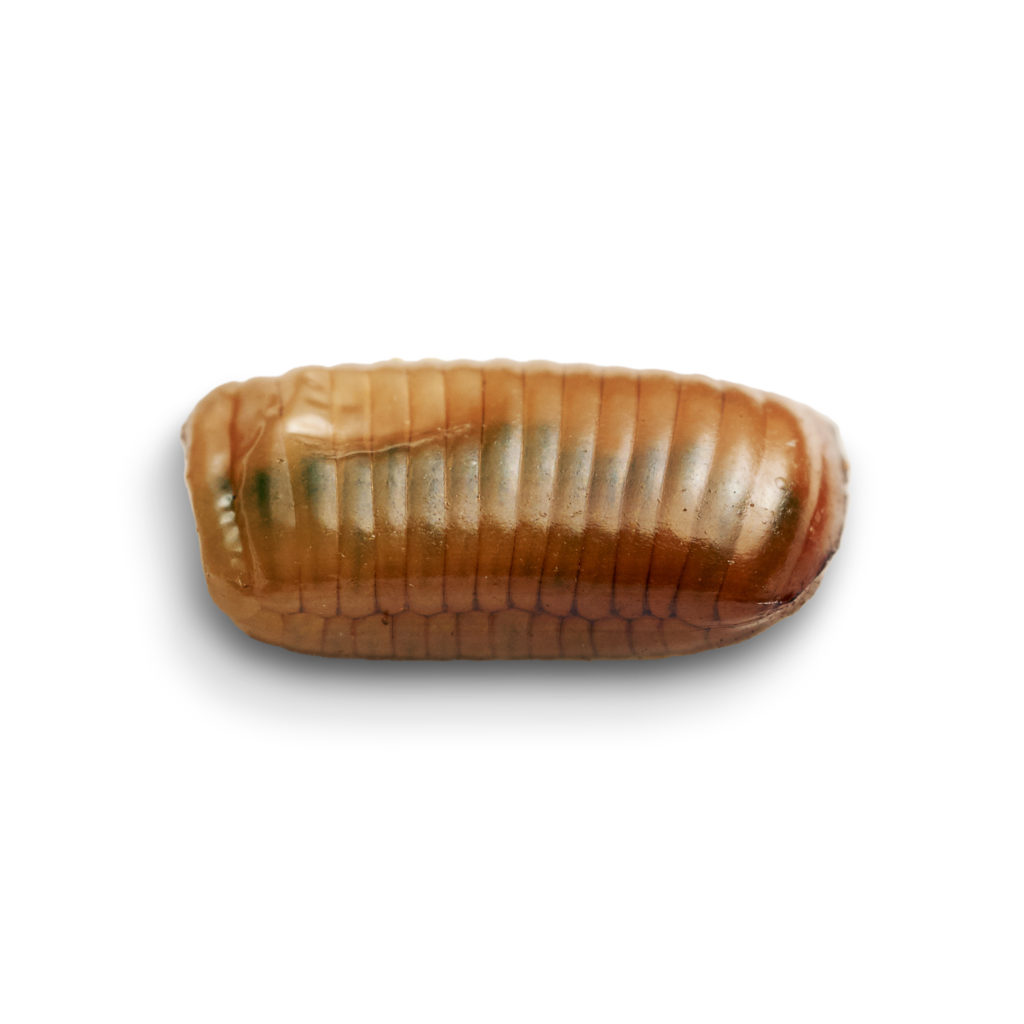
Another piece of evidence you can find are cockroach eggs, or their egg cases.
These egg cases have a brown or reddish-brown color.
They are typically around 1/4 inch long.
Adult female roaches make it their mission to hide these cases properly, so it’s rare that you’ll find them.
Female roaches will typically hide them in small crevices such as between cabinets and, sometimes, inside cardboard boxes.
Some cockroaches will carry their eggs and only drop them a few days before they are ready to hatch.
Other types of roaches, such as the brown-banded cockroach, stick them to walls.
If you have brown-banded roach, be sure to look on areas on areas you wouldn’t normally look such as under kitchen cabinets or under kitchen tables.
4. Unusual Smells
Another telltale sign is a strong, musty order in your home.
This smell can be a serious indicator you have a roach problem on your hands.
They are likely nearby and are more than one.
5. Seeing Roaches During The Day
Roaches are nocturnal.
If you see a cockroach during the day, there is a high chance you have an infestation.
Roaches like to hide during the day.
But overcrowding can force them to compete for food and water.
As a result, some may expose themselves during the day to survive.
If you spot roaches during the day, it’s time to seek help from pest control professionals.
6. Dead Roaches Lying Around
Sotting dead carcasses is a sign that the cockroaches in your home have reached completed their lifecycle.
One female can lay between 8 and 10 ootheca or egg capsules in their short lifetimes.
As a result, they can lay up to 400 young.
It is likely that if one female cockroach reached full maturity, more have as well.
This is a sign that there could be a larger infestation growing in your home.
Conclusion
If any of those apply to your situation, the best bet is to call a professional to help get rid of them for good.
Roaches are notorious for being difficult to get rid of so an expert’s help is vital. It can save you plenty of time, energy and stress.
Don’t try to solve infestation by yourself. As for help to make sure your home is free of these unwanted pests.
